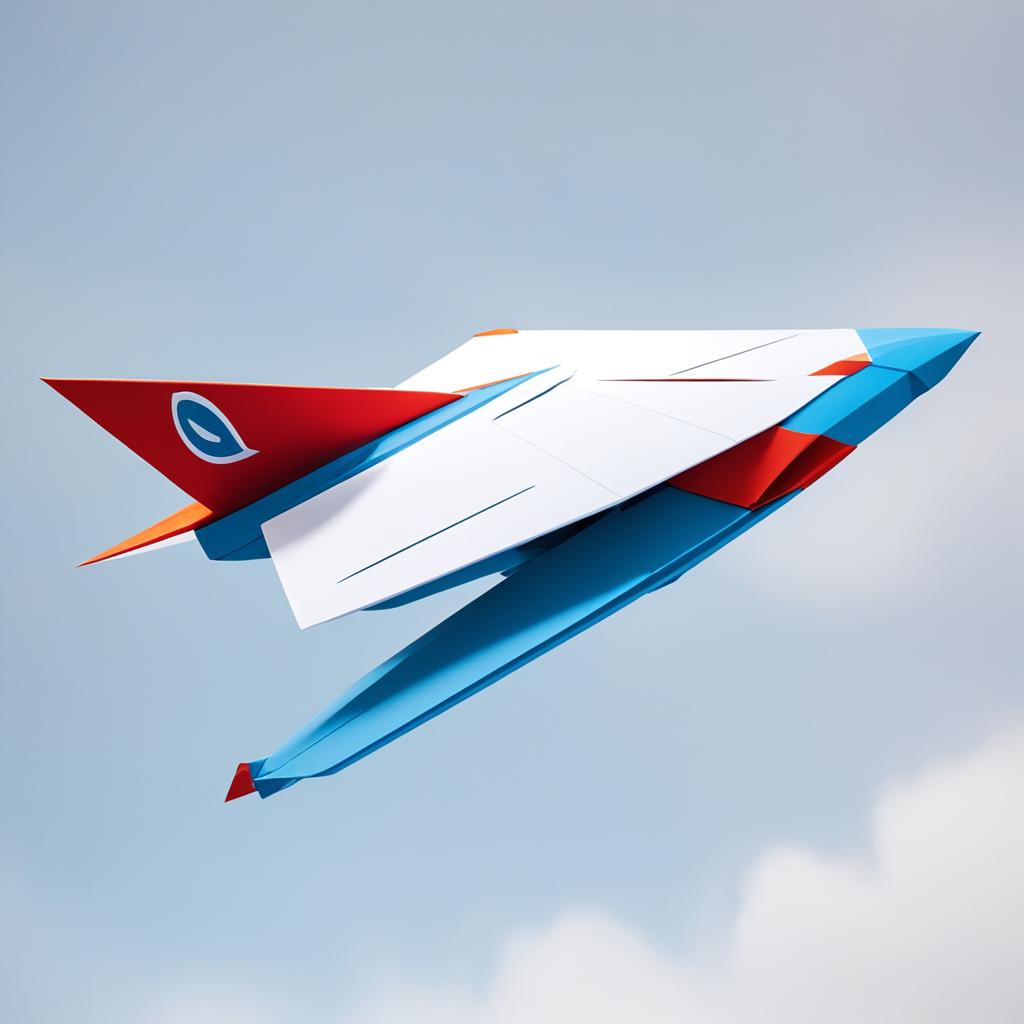Have you ever wondered how you can take a simple paper plane and transform it into a soaring masterpiece? What if I told you that with a few modifications, you can unlock the secrets to better flight, enhanced stability, and even impressive style?
Many people believe that a paper plane is just a child’s plaything, but in reality, it can be a fascinating experiment in aerodynamics and design. By making some key adjustments to your paper planes, you can achieve remarkable results that will leave you in awe.
So, are you ready to step up your paper plane game? Let’s dive into the world of paper plane modifications and discover how you can turn an ordinary piece of paper into a high-flying work of art!
Symmetrical Wings for Balanced Flight

Ensuring that the wings of your paper plane are symmetrical is crucial for balanced flight. When the wings are symmetrical, the wind hits the plane in the same way on both sides, resulting in better stability during flight. Here are some tips to achieve symmetrical wings:
- Inspect the wings for any creases or folds that may cause asymmetry. Smooth out any irregularities using your fingers or a flat surface.
- If one wing is longer than the other, carefully refold the longer wing to match the length of the shorter one. This will help maintain symmetry and balance.
- Pay attention to the alignment of the wings while folding the paper plane. Make sure you fold along the centerline accurately to create perfectly symmetrical wings.
| Benefits of Symmetrical Wings | Challenges of Asymmetrical Wings |
|---|---|
| 1. Improved Stability: Symmetrical wings provide better stability during flight, allowing your paper plane to fly smoothly and maintain a consistent trajectory. | 1. Unpredictable Flight: Asymmetrical wings can lead to unpredictable flight patterns, making it difficult to control the direction and stability of your paper plane. |
| 2. Balanced Lift: Symmetrical wings evenly distribute the lift force, which helps prevent one side of the plane from lifting higher than the other, ensuring a more balanced flight. | 2. Uneven Lift: Asymmetrical wings can cause uneven lift, resulting in the plane veering off to one side or experiencing instability during flight. |
| 3. Better Aerodynamics: Symmetrical wings create a more streamlined shape, reducing drag and allowing the plane to glide through the air with less resistance. | 3. Increased Drag: Asymmetrical wings can create more drag, slowing down the plane and hindering its overall performance. |
Remember, symmetrical wings are essential for achieving balanced flight with your paper plane. Take the time to ensure symmetry during the folding process, and you’ll be rewarded with improved stability and a more enjoyable flying experience.
Adjusting Wing Length and Angling

The wing length and angle play a crucial role in determining the flight performance of your paper plane. By adjusting these factors, you can manipulate the throwing speed, angle, and gliding capabilities of your creation. Experimenting with different wing lengths and angles will allow you to optimize your paper plane’s flight characteristics to suit your preferences.
Short, stubby wings are ideal for achieving faster throws and higher upward angles. These wings create more lift and provide better control during steep ascents. On the other hand, long, wide wings are better suited for gliding, enabling your plane to stay airborne for a longer duration.
When folding your paper plane, consider the desired flight performance and style you want to achieve. To create short, stubby wings, start with a wider paper fold and make shorter folds towards the center. For long, wide wings, begin with a narrower paper fold and gradually extend the wingspan towards the edges.
Remember, each adjustment you make to the wing length and angle will affect how your paper plane flies. It’s all about finding the right balance between speed, lift, and stability. Don’t be afraid to try different combinations until you achieve the desired results.
By mastering the art of adjusting wing length and angling, you can unlock the full potential of your paper plane and enjoy an enhanced flight experience.
Adding Fins for Stability

When it comes to enhancing the stability of your paper plane, adding fins can make a significant difference, especially for more complicated designs. Fins are small folds that can stabilize and strengthen the plane during flight, ensuring a smoother and more controlled trajectory.
However, it’s important to note that fins are not suitable for all paper plane designs. For standard dart planes, it’s best to avoid adding fins as they can potentially slow down the plane and affect its flight performance.
Incorporating fins into your paper plane design requires careful consideration. They should be strategically placed on the wings to achieve optimal stability. Too many or improperly positioned fins can disrupt airflow and hinder the plane’s performance.
To help you visualize the impact of fins, here’s a table showcasing how different fin configurations can affect stability:
| Fin Configuration | Stability Rating |
|---|---|
| No Fins | 3/5 |
| Single Central Fin | 4/5 |
| Twin Side Fins | 4.5/5 |
| Triangular Fins on Wings | 4/5 |
As shown in the table, the addition of fins can significantly improve stability, with configurations featuring twin side fins generally providing the highest stability rating. Remember to carefully experiment with fin placement and adjust the design accordingly to achieve the desired level of stability without compromising flight performance.
To further illustrate the concept of fins, here’s an image of a paper plane with fins:
By incorporating fins into your paper plane design, you can enhance stability and tackle the challenges posed by more intricate designs. Remember to consider the specific requirements of your plane and fine-tune the fin configuration to strike the perfect balance between stability and flight performance.
Adjusting the Nose for Stability and Weight
In the world of paper planes, stability and weight balance are key factors in achieving optimal flight performance. One crucial adjustment that can make a significant difference is modifying the nose of your paper plane. By understanding how to adjust the nose, you can enhance the stability and control of your plane, ultimately improving its flight capabilities.
When it comes to nosediving planes that tend to crash or lose stability during flight, bending the back end of the nose upwards can help rectify the issue. This adjustment alters the airflow around the nose, providing greater stability during descent. Additionally, it counteracts the nose’s tendency to dip downward, allowing for a smoother flight trajectory.
On the other hand, if your paper plane tends to fly upwards, bending the back ends of the nose downwards can be beneficial. This adjustment helps counterbalance the upward lift and promotes a more level flight. By adjusting the nose in this way, you can achieve better stability and keep your plane airborne for longer periods.
Another technique for improving stability and weight balance is adding weight to the nose of the paper plane. By placing a small object, such as a paperclip or a small piece of tape, at the front of the nose, you can shift the plane’s center of gravity forward. This adjustment helps achieve a more balanced distribution of weight throughout the plane, resulting in improved stability and a smoother flight.
Remember, adjusting the nose of your paper plane requires experimentation and fine-tuning. Each plane design may react differently to nose adjustments, so don’t be afraid to try different angles and techniques to find the perfect balance for your specific plane.
| Nose Adjustment Technique | Effect |
|---|---|
| Bending the back end of nosediving planes upwards | Enhanced stability and smoother descent |
| Bending the back ends of upward-flying planes downwards | Improved level flight and reduced tendency to climb |
| Adding weight to the nose | Shifted center of gravity for better weight balance and stability |
Tail Adjustments for Directional Control
When it comes to paper plane flight, directional control is essential for achieving the desired path. Tail adjustments play a crucial role in fine-tuning the direction your plane takes. By making simple modifications to the tail, you can enhance the control and stability of your paper plane.
To adjust the tail for directional control, you need to consider the lean of your plane as it travels through the air. If your plane tends to lean towards the right during flight, you can bend the tail slightly towards the left side. This adjustment redirects the airflow, causing the plane to turn left, counteracting the natural lean. On the other hand, if your plane leans towards the left, bending the tail towards the right side can help correct the direction and ensure a straighter flight path.
Bending the tail in the opposite direction of the plane’s lean helps in correcting the airflow and achieving better directional control. This adjustment compensates for any imbalances and ensures a more stable flight.
To make tail adjustments, gently hold the tail of your paper plane and bend it towards the desired side. Be careful not to apply too much force as it may damage or tear the paper. Always test your plane after making adjustments and make further tweaks if necessary to achieve optimal directional control.
Remember, tail adjustments are just one aspect of fine-tuning your paper plane’s flight characteristics. Experimenting with wing adjustments, adding fins, and testing different throwing techniques can further enhance your plane’s performance.
Throwing Techniques for Different Plane Designs
Different paper plane designs require different throwing techniques. To ensure the best flight performance, it is important to understand how to properly launch each type of plane.
If you have a thin, long-winged plane, such as the classic dart design, it is best to throw it gently. This will help preserve its delicate structure and prevent it from being damaged mid-flight. Start with a smooth, controlled motion and release the plane with a light flick of the wrist. This gentle launch will allow the plane to gracefully soar through the air.
On the other hand, if you have a short, stout plane like a stubby delta wing or a boxy design, a hard launch is recommended. These types of planes benefit from a stronger initial thrust to generate the necessary lift. Use a more forceful throwing motion, giving the plane a powerful launch. The added velocity will help these planes achieve better stability and distance.
Remember, experimentation is key when it comes to throwing techniques. As you become more experienced, you can fine-tune your throwing motions and angles to find the best technique for each specific plane design. Regularly testing and adjusting your planes will help you refine their flight characteristics and achieve optimal performance.


